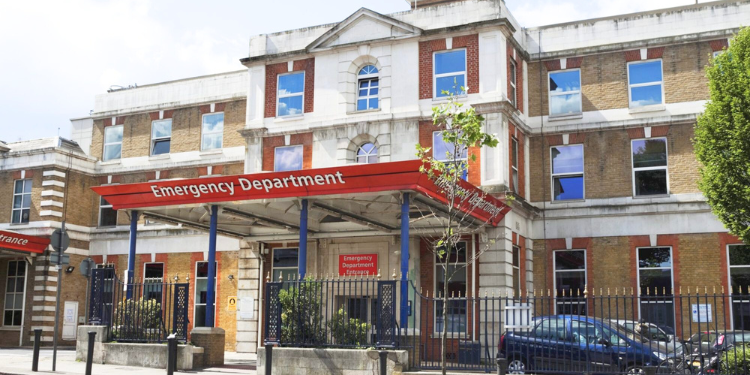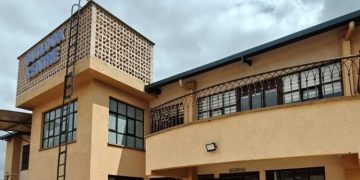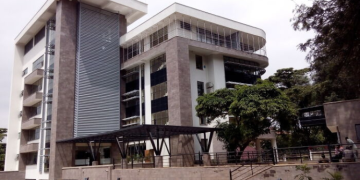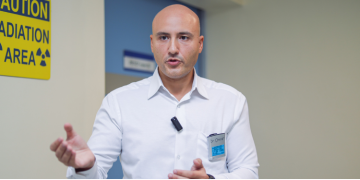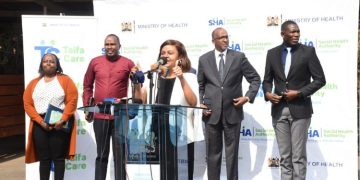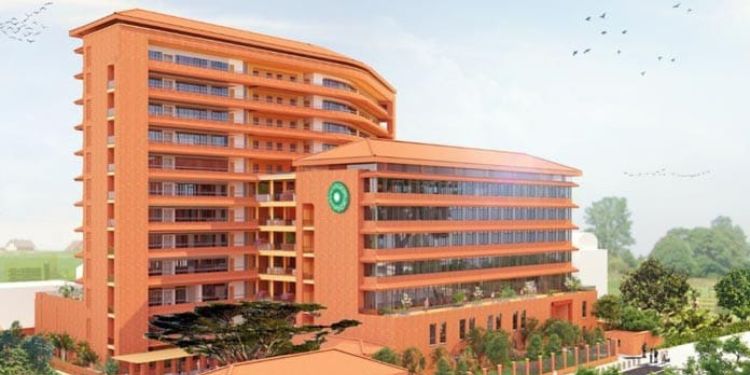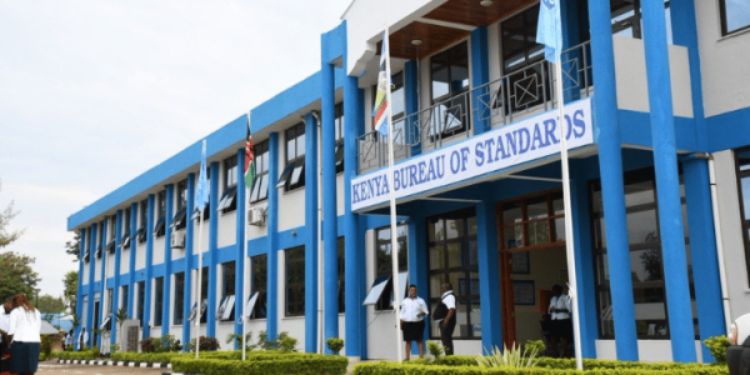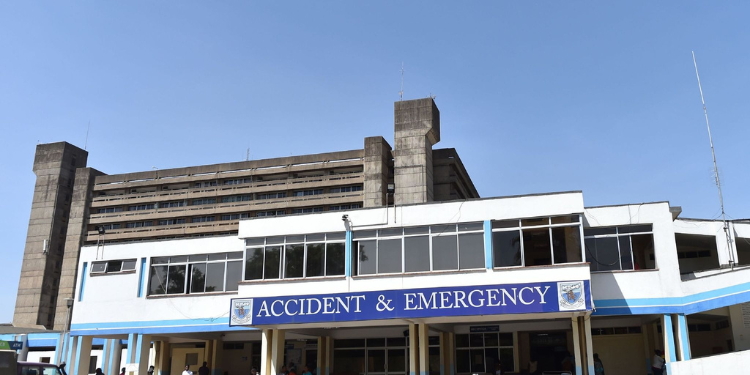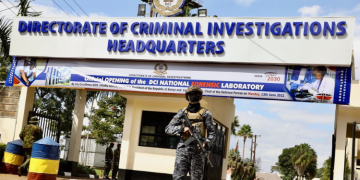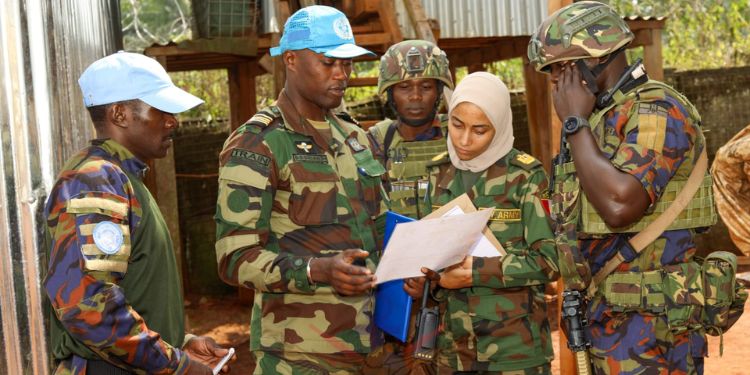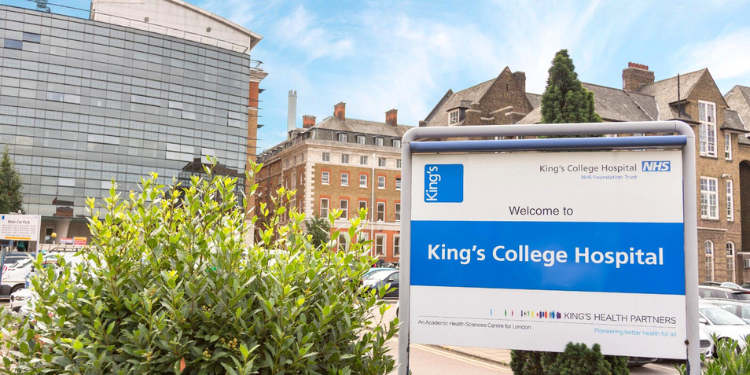King’s College Hospital (often just “King’s” or “KCH”) is a large teaching hospital and major trauma centre in London.
It is part of the NHS (National Health Service) and managed by King’s College Hospital NHS Foundation Trust.
It is located on Denmark Hill, in the Camberwell area of the London Borough of Lambeth.
It serves both local populations (boroughs such as Lambeth, Southwark, Bromley) and acts as a referral centre for more specialist care for people from further away.
King’s College Hospital History
King’s College Hospital was founded in 1840 by King’s College London in a disused workhouse on Portugal Street, near Lincoln’s Inn Fields and King’s College London.
Its primary purpose was to serve as a training hospital for medical students of King’s College London.
The surrounding area was plagued by poverty and disease, making the hospital vital for the local population.
It was founded at a time when London’s working class faced widespread poverty and disease, and access to medical care was extremely limited.
Under the direction of early medical pioneers, King’s quickly gained a reputation for both high academic standards and humane patient care.
However, the hospital quickly became overwhelmed, and by 1842, it was treating 1,290 inpatients in just 120 beds, often with two patients sharing a bed.
By 1851, the increasing demand for services had forced the hospital to seek larger and more modern premises, as patient numbers had surged to over 30,000 annually.
Nursing and Medical Innovation
In 1856, King’s became one of the first hospitals in the UK to offer formal nurse training, led by the Sisterhood of St John the Evangelist.
Katherine Henrietta Monk, appointed in 1884, was a pioneering Sister Matron who reorganized the nursing department and founded the training school for nurses.
In 1877, Joseph Lister, the father of antiseptic surgery, performed the first major elective surgery under antiseptic conditions at King’s, positioning the hospital as a leader in surgical innovation across Europe.
Despite improvements in 1851 and the construction of a new building in 1861, the hospital remained overcrowded.
A proposal to relocate west of Somerset House was blocked by residents.
Eventually, following the King’s College Hospital Act of 1904, plans were made to move to a new site at Denmark Hill, with the foundation stone laid in 1909.
In 1923, a dental school was established at the Denmark Hill site.
In 1937, the Guthrie Wing was built for private patients, funded by the Stock Exchange Dramatic and Operatic Society, offering more comfortable accommodations.
Throughout the 20th century, King’s continued to lead in clinical advancement.
It developed one of Europe’s first comprehensive liver units, performing early liver transplants and pioneering treatments for cirrhosis and liver failure.
The hospital’s neurology, haematology, and oncology departments advanced research in brain disorders, blood cancers, and targeted therapies.
Also Read: UN Delegation Lands in Nairobi for Crucial IEBC Audit Ahead of 2027
Today, as part of King’s Health Partners, the hospital unites research, teaching, and patient care through collaboration with King’s College London and other major NHS trusts.
20th Century Growth and Innovation
During World War I, large parts of the hospital were repurposed for military use, treating wounded soldiers.
In World War II, the King’s played a critical role in treating air raid casualties, and despite the heavy bombing in London, it avoided major direct hits, allowing it to continue operations uninterrupted.
King’s became a pioneering institution in several medical fields:
- The UK’s first bone marrow transplant was performed here.
- Helped establish the world’s first voluntary blood donor service.
- In the 1960s, King’s founded one of the first liver units in the UK, which has since become a major European transplant centre, completing over 6,000 liver transplants.
The hospital expanded its expertise in diabetes, sickle cell disease, neurology, fetal medicine, stroke, and blood cancers.
Also Read: Putin Cornered as China Cuts Off High-Precision Machine Tools
It also became home to the Thrombosis Research Unit (active from 1972–1996), contributing to global understanding of blood clotting disorders.
Trauma and Emergency Care
In 2016, King’s opened a helipad on top of the hospital, dramatically improving trauma response across South East London and Kent.
By 2019, it became the first major trauma centre in London to allow night-time air ambulance landings, ensuring 24/7 access to specialist care.
Follow our WhatsApp Channel and X Account for real-time news updates.
